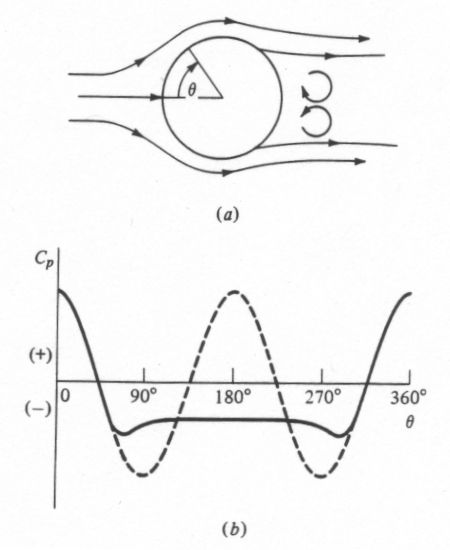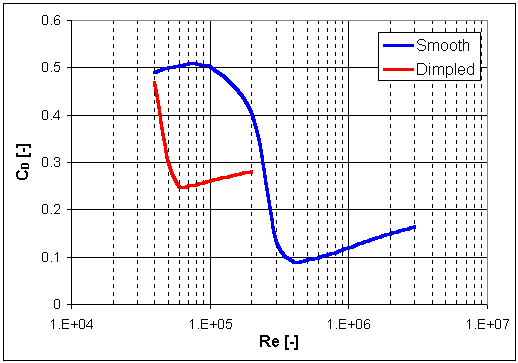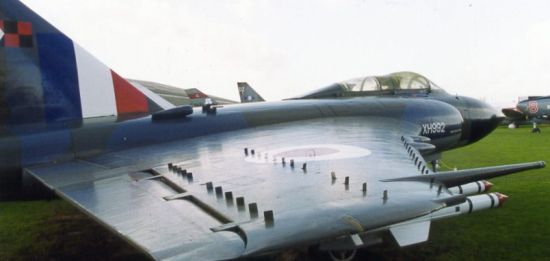Welcome by all means, Mitsuhirato. Is that name related in any way with Tintin's "The Blue Lotus"?
Well, no. Shark skin, might be, dimples, I don't think so. Brace yourselves for one of my famous "short" posts. Say thanks, I'm in a hurry.
Why are dimples used? It's not because they diminish drag, but because they create turbulent flow. This flow has more energy, so the separation it experiences behind the
ball is smaller. This is the idea:

Now, let's go back:
If you tried to imagine the pressure at the trailing edge, the middle and the leading edge of a sphere (measuring the angle theta in the figure) and
you assumed air to be frictionless, you get something like this:

At 0 degrees (the front) there is high pressure, at 90 degrees (top of the
ball), very low, at 180 degrees (back of the
ball)
the pressure is equal and opposite to the one you get in front. So,
a sphere should not have any drag! This is know as the
D'Alembert paradox, because he stated it for the first time.
Fast forward one hundred years: thanks to George Cayle and his invention of aerodynamics, it was understood that the air that impacts on the sphere
drags around it until it has lost all its energy. At that point it separates from the sphere, like this:

You can see that at the 180 degrees position (the back of the sphere), the pressure is negative. This is what creates the drag for the whole sphere. Dimples, as shown in the first picture of this post, make "less negative" the pressure around the
ball, so in the end you have lower drag. Check this graph:

Now, back to your question: why aren't dimples used? After all, many designers play
golf... Well, it should be clear that this "dimple trick" works when you have flow separation. Unfortunately, not all kind of shapes have the same problem. Just look at this:

The black and white squares, to the right of the image, show the proportions of skin drag and pressure drag: the pressure drag is insignificant for a wing. Ergo, no dimples.
You use vortex generators, that's true. Here you have them:

Their purpose is not to decrease drag, it's to delay separation to avoid stalling at low speeds. The shape (they're not dimples, but small protrusions) makes them to provide you with the same effect of dimples (less separation on the trailing edge) with less drag.
In racing, serrated edges, with a similar purpose are widely used (well...):
Serrated gurney flap

Serrated windscreen (with holes)

So, sorry, man. Back to the drawing board. Comments?
I might have made several mistakes, I know that I don't have the discipline of proffessionals here, I have amateur knowledge, so any corrections will be a ray of sun for my dangerous (incomplete) knowledge.











